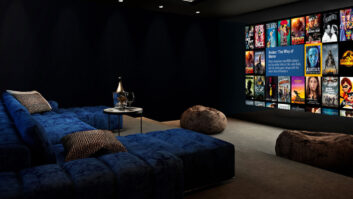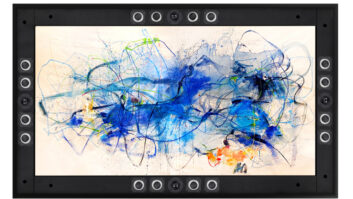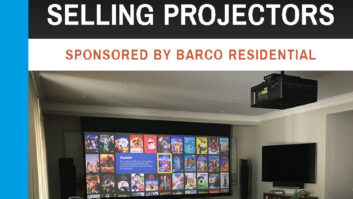According to the U.S. Consumer Product and Safety Commission (CPSC), over 40,000 fires are caused each year by residential electrical wiring. Over the last decade, unsafe electrical wiring has been the leading cause of fire-related deaths involving electrical equipment. Coupled with this is the fact that as residential technologies advance, more performance is required out of wiring and cable. While installing up-to-date wire and cabling systems into new homes is relatively straightforward, meeting the needs of existing homes presents more of a challenge.
“So many existing residences are reaching what many people term ‘end of life’ for their wiring systems,” said Robb Sexton, CEO of DeCorp Americas in Hendersonville, Tennessee (www.decorp.com). “How do we upgrade these existing residences, and what technology can we use? There are cost issues associated with trying to replace an in-wall wiring system, and that is especially an issue in homes that have solid wall construction.”
John Kelly, president of Signature Wire Corp. in Denver, Colorado (www.signaturewire.com) added, “In existing homes, if you have an open basement or an open attic that you can penetrate from the top and bottom, it makes life simpler. In some of these applications, wireless is being used because some of these homes are so closed up that there is no way of accessing anything.”
DeCorp addresses this challenge with its flat wire, surface-mount systems. “We have taken the in-wall paradigm and changed it to a surface-mount paradigm,” Sexton explained. “We treat the wall, ceilings and, in some cases, underneath the carpets as almost a decorating issue or a small re-wire issue as opposed to a major rebuild.”
Kelly notes that with new homes, these issues rarely come up. “It is pretty much assumed that if you are going to put up a home today, you need to install your Category cables, your voice and data cables, coaxial cables at the very minimum,” he said. “Then it could be distributed audio throughout the house, and it just gets fancier from there.”
Determining the locations of electrical outlets, however, can be tricky. Sexton believes that his company’s surface-mount approach bodes well in these situations. “Builders are thinking about not only the aesthetics, but what technology the homeowners will be using,” he said. “If you look at the way homes are constructed, in many cases you have an electrician or some other tradesperson trying to figure out where the cable access or phone access should be in a room. Once it is constructed, that outlet is there, and if they were wrong by a foot or many feet, the outlet is not where the device needs to be. That is becoming a larger problem as more technology products come into play.”
Eric Bodley, a Monster Cable dealer and president of Bonita Springs, Florida-based Bodley & Associates Inc. (www.bodley.com) believes that the biggest issue facing this market right now is proper design. “Very few rooms and very few of our clients’ lifestyles revolve around a single wall in a room,” said Bodley, who also operates a custom installation company, called Home Entertainment Design.
Steven Hill, president and CEO of Straight Wire (www.straightwire.com), believes that builders and providers of wiring and cable systems need to put themselves in the shoes of the homeowner. “Too many people in the building trade have said, ‘What is the minimum that I have to do to claim that this house is smart-wired?’ Then they run a Category 5 cable and they are done,” he said. “By running conduit or even flexible tubing to key rooms in the house and leaving the pole lines in, it leaves it open to future formats.”
John Pryma, RCDD/LAN specialist and vice president and general manager of the structured cable division at Genesis Cable Systems (www.genesiscable.com), laments the fact that many installations are done poorly. “Eventually what is going to happen is that the industry is going to force installers to use Category 5e testers, and then it will be similar to commercial situations, where everything is tested, and if it doesn’t pass, it gets replaced,” he said. “There are too many cases where you get a dial tone and you might be able to watch cable, but in the future, when high speed data is implemented, or a digital television system is installed, all of a sudden the cable may not be able to handle it.”
One of this industry’s most significant obstacles is that many treat wire and cable as an afterthought. “If a consumer wants to put a surround sound system in their home, they may go out and buy that system without thinking about the related wiring issues,” Sexton said. “They wind up going back to the dealer, who must come up with a solution. The only real solution in many cases is for the dealer to recommend a professional install, which is invasive.”
Joe Perfito, president of Tributaries Cable in Orlando, Florida (www.tributariescable.com), notes the importance of educating homeowners about how wiring and cable affects the overall performance of home entertainment systems. “We don’t see a lot of custom installation companies taking a position that cable is as important a part of the system as the components are, and that you can improve the quality of the audio and video demonstrably using better cable,” he said. “It’s almost as if they are afraid to make the presentation because they think they are going to lose the sale. I have seen people spend thousands of dollars on lighting systems and then turn around and say, ‘I want to use the cheapest cable you have.’ The salesman needs to have the ability to present the product in a logical manner so that the customer can see that it makes a lot of sense.”
While wireless technology continues to make its way into residential applications, Kelly regards it as almost a complementary trend. “What drives wireless is wire,” he said. “The signal actually starts from some sort of wire-based system, then resonates the signal out to be received by a wireless apparatus. Some retrofit applications demand wireless because there is no other option, but wire is always going to be a part of it.”
The emphasis on home entertainment systems has grown stronger in a short period of time, observed Rick Akins, president of FirstPoint Communications, an Oak Brook, Illinois-based company (www.firstpointonline.com) focused on residential cabling, communications, networking and control systems. “There is a huge increase in interest in pre-wiring for entertainment systems – going from having just music throughout the house with an intercom system, to really having high quality speakers throughout the home and sharing that on a multi-agent system,” he said. “A couple of years ago, the major focus was getting cable into walls for communications purposes. Now it is for entertainment purposes.”
Sexton believes that to be effective in the sale of wire and cable, a shift in thinking is required. “We now have to thinking of wiring not just as outlets that people will plug devices into; we have to start addressing devices that need a wired or wireless solution,” he said. “No longer can the home dictate where the devices go; the devices now dictate where the wiring goes. It’s a fundamental change.”
Carolyn Heinze ([email protected]) works from her office in Vancouver, Canada.







